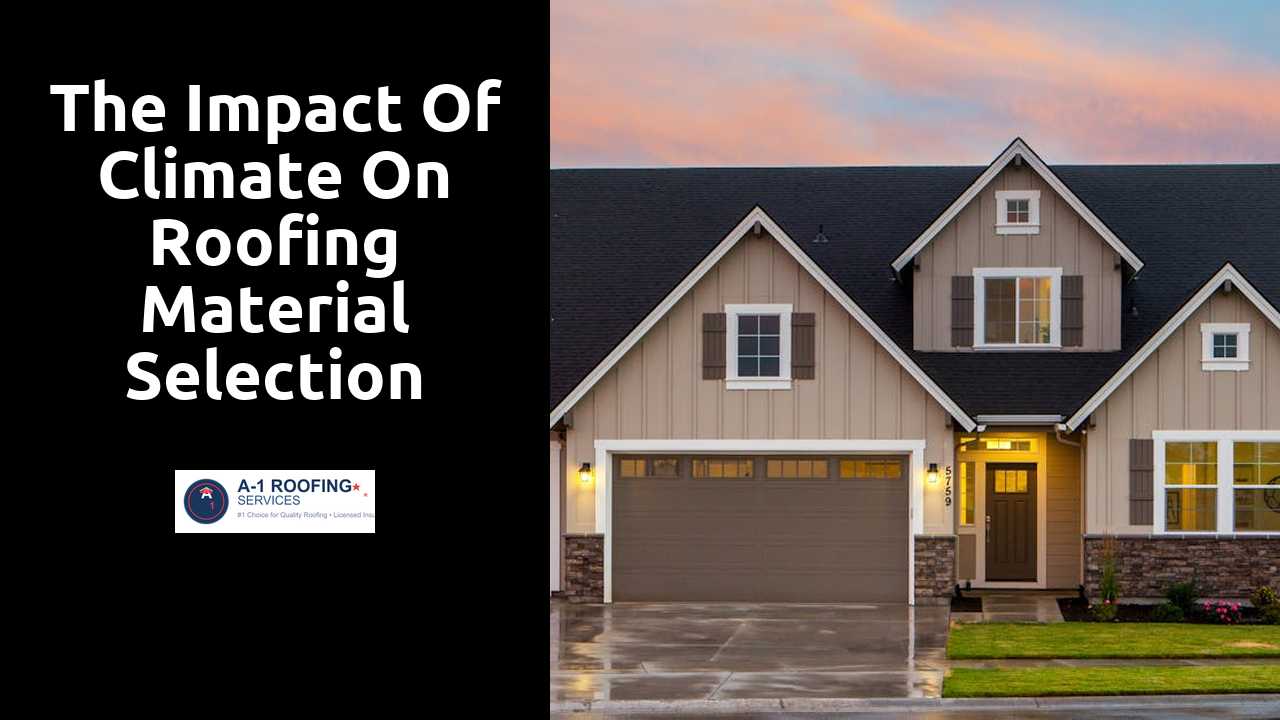
The Impact of Climate on Roofing Material Selection
Table Of Contents
UV Radiation and Its Effects on Roofing
Excessive exposure to ultraviolet (UV) radiation can lead to significant degradation of roofing materials over time. Many roofing options, especially those made from synthetic substances, can suffer from issues like fading, cracking, and brittleness. These problems arise because UV rays break down chemical bonds in the materials, compromising their structural integrity. Homeowners often find that roofs exposed to high levels of UV radiation may require more frequent maintenance and replacement, increasing long-term costs.
Understanding the effects of UV radiation helps in selecting appropriate roofing materials. Some options, such as metal roofs and certain types of asphalt shingles, are engineered to withstand harsher conditions. Selecting materials with UV resistance ratings can enhance longevity and performance. Investment in high-quality roofing can ultimately save money and resources, as these materials are designed to endure exposure without significant degradation.
Navigate to these guys for detailed information.
Selecting UV-Resistant Materials
Choosing materials that can withstand UV radiation is essential for roofing durability. Options like metal roofing, especially aluminum and galvanized steel, offer high resistance to sun damage. These materials reflect solar rays, reducing heat absorption and prolonging roof life. Thermoplastic polyolefin (TPO) and ethylene propylene diene terpolymer (EPDM) membranes are also excellent choices. They are designed specifically for flat roofing and possess inherent UV-resistant properties.
When considering asphalt shingles, selecting those with a robust granule coating enhances UV protection. Premium shingles often contain reflective materials that minimize thermal buildup. The availability of various options allows homeowners to match aesthetics with functionality. Consulting with roofing specialists can provide valuable insights into the best UV-resistant materials suited to specific climate conditions.
Regional Regulations and Building Codes
Local governments establish specific regulations and building codes that dictate the types of materials suitable for roofing projects. These regulations often reflect the specific climate conditions of the region, aiming to promote safety and durability. For instance, areas prone to heavy snow may require roofing materials that can support substantial weight, while those in hurricane-prone regions might mandate wind-resistant materials. Such guidelines ensure that buildings are equipped to withstand local weather challenges.
Compliance with these regulations is not only a legal obligation but also plays a critical role in ensuring the longevity of buildings. Builders and homeowners must stay informed about any updates to local codes, as changes can significantly influence material selection. Additionally, failing to adhere to these codes can result in fines or necessitate costly modifications later. Therefore, understanding and integrating these local requirements into roofing material choices is essential for successful construction projects.
How Local Laws Affect Material Choices
Local laws play a significant role in determining what roofing materials can be used in various regions. Building codes often stipulate specific standards for durability, fire resistance, and energy efficiency. These regulations ensure that roofs can withstand local climate conditions, such as heavy snowfall or extreme heat. Compliance with these codes not only promotes safety but also influences the selection of materials by constraining options to those that meet the prescribed criteria.
Additionally, zoning laws and neighborhood guidelines may dictate aesthetic considerations for roofing. Homeowners might be required to use specific colors, styles, or materials to maintain a cohesive look within a community. This can further limit choices for roofing materials, leading homeowners to prioritize compliance with local regulations over personal preference. Understanding these legal frameworks is essential for anyone involved in construction or renovation.
Environmental Sustainability and Roofing Materials
The increasing focus on environmental sustainability has transformed the way roofing materials are chosen. Homeowners and builders alike are seeking options that minimize environmental impact while maximizing energy efficiency. Materials such as metal, reclaimed wood, and environmentally-friendly asphalt shingles are gaining popularity due to their longevity and recyclability. These choices contribute not only to the performance of the structure but also to a larger commitment towards reducing the carbon footprint associated with construction.
Incorporating eco-friendly materials can lead to significant benefits beyond the immediate performance of the roof. Many sustainable options provide natural insulation, which can improve energy efficiency and reduce heating and cooling costs over time. Additionally, some manufacturers prioritize sustainable production processes, making their products more appealing to environmentally-conscious consumers. This shift towards sustainability not only nurtures the planet but also encourages innovation within the roofing industry, paving the way for future advancements in material technology.
The Importance of Eco-Friendly Options
Sustainability has become a crucial consideration in the construction industry, particularly when it comes to roofing materials. Eco-friendly options not only minimize environmental impact but also contribute to energy efficiency. Selecting materials that are recycled, renewable, or sustainably sourced can significantly reduce the carbon footprint of a building. These choices often lead to a decrease in waste and pollution, promoting a healthier ecosystem and benefitting both present and future generations.
Additionally, eco-friendly roofing materials can enhance a building's energy efficiency. For instance, cool roofs that reflect sunlight can lower energy costs by reducing the demand for air conditioning. Green roofs, which support vegetation, can improve air quality while providing insulation. The integration of these sustainable practices aligns with the growing emphasis on environmentally responsible construction, ensuring that roofing systems not only protect buildings but also support a more sustainable future.
Related Links
Understanding the Lifespan of Common Roofing MaterialsHow to Choose the Right Roof Color for Your Home